Introduction
The art of selling SaaS is a skill that any tech entrepreneur or business needs to know.
SaaS is a massive market where a promising projection by Gartner sees that end-user spending on public cloud services will rise 20.7% in 2023, reaching $591.8 billion. If you know how to sell software effectively, it might be your ticket to this lucrative market.
The global SaaS market size will grow to $716.52 billion in 2028, with a CAGR of 27.5% (Grand View Research, 2021).
However, to become a skilled person who can sell Service as Software, sales sellers have to know the requirements of their customers and represent value propositions and effective marketing strategies. Potentially, however, payoffs are huge because the average organization uses 80 SaaS applications (BetterCloud).
This guide will be an all-around approach at how to sell Software as a Service-from market research all the way to customer retention.
Whether you are an established company or a new start-up, knowing the right way to effectively sell Software as a Service is a foremost requirement in the modern eco-sphere of technology.
What is SaaS?
SaaS stands for Software as a Service. Generally, it offers cloud services where users do not download software on their computing devices but access it over the internet.
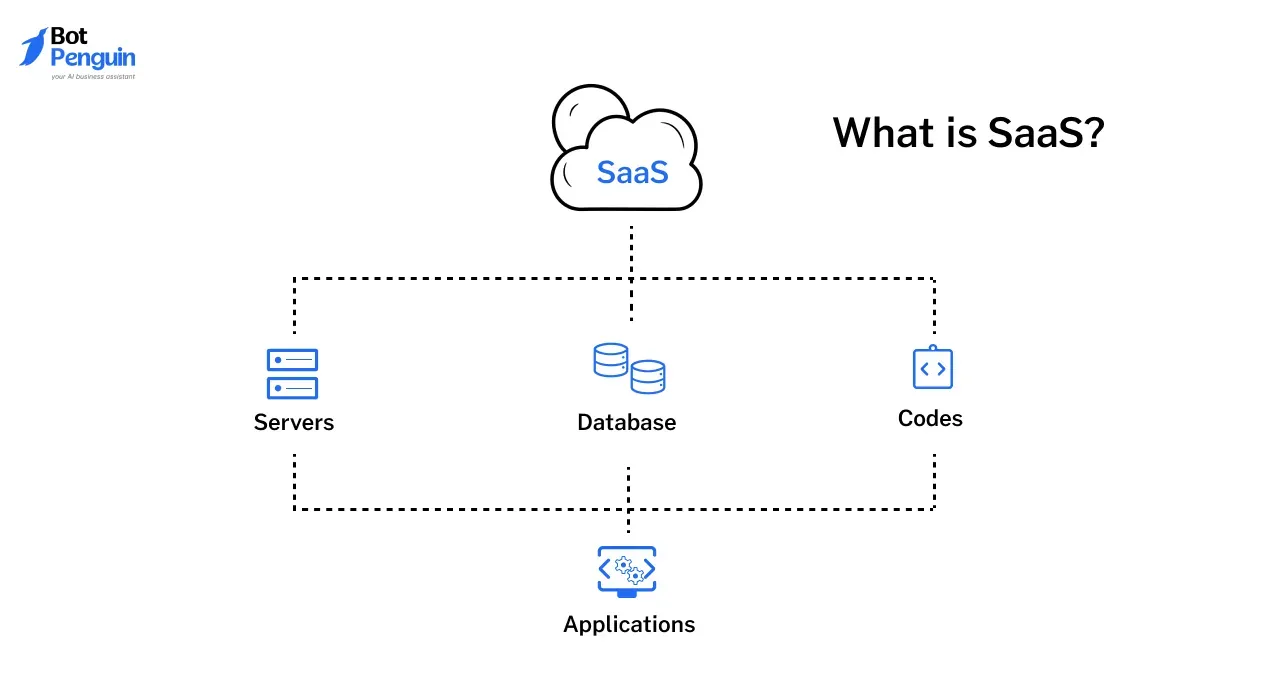
Imagine using Google Workspace, Dropbox, or Slack. It is accessible from any device with an internet connection, thus making it very easy to work and keeps clients constantly updated.
SaaS has become a solution adopted by all types of businesses. No more hassle of hardware or long installations-the user pays for the subscription or a monthly fee and allows using the software. It also saves time and money for the company to focus on its main competencies.
Today targeting the customer and telling how simple it is going to be and offering software as a service is not that easy, indeed.
Benefits of SaaS
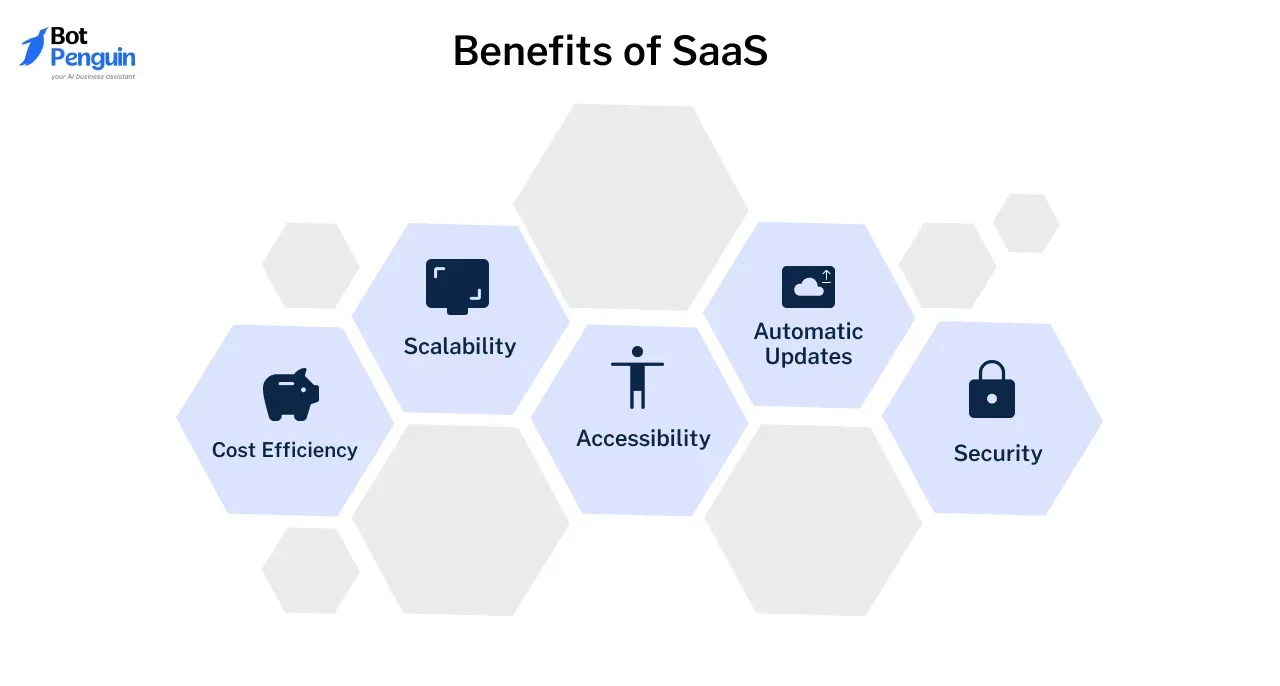
SaaS offers numerous advantages over traditional software models. Understanding these benefits can help you sell software as a service more effectively.
Here's why businesses love SaaS
- Cost Efficiency: Since users subscribe, they avoid hefty upfront costs associated with traditional software purchases.
- Scalability: As the business grows, users can easily upgrade their plans without needing new installations or hardware.
- Accessibility: Users can access the software from anywhere, using any device connected to the internet. This flexibility is especially attractive for remote teams.
- Automatic Updates: SaaS providers handle updates, ensuring users always have the latest features without the need for manual upgrades.
- Security: SaaS solutions often come with robust security protocols, helping businesses protect their data while reducing maintenance costs.
The more you highlight these benefits, the more appealing your SaaS product becomes—especially when discussing how to make money with SaaS. A focus on delivering clear value is key, and these benefits often speak for themselves.
With tools like BotPenguin, showcasing specific features such as 24/7 accessibility, efficient customer engagement, and seamless integration helps potential clients see the direct impact on productivity and user satisfaction.
By demonstrating how BotPenguin streamlines customer interactions and automates essential processes, you can illustrate how value-driven SaaS products can translate into profitable, scalable solutions.
Key Characteristics of SaaS
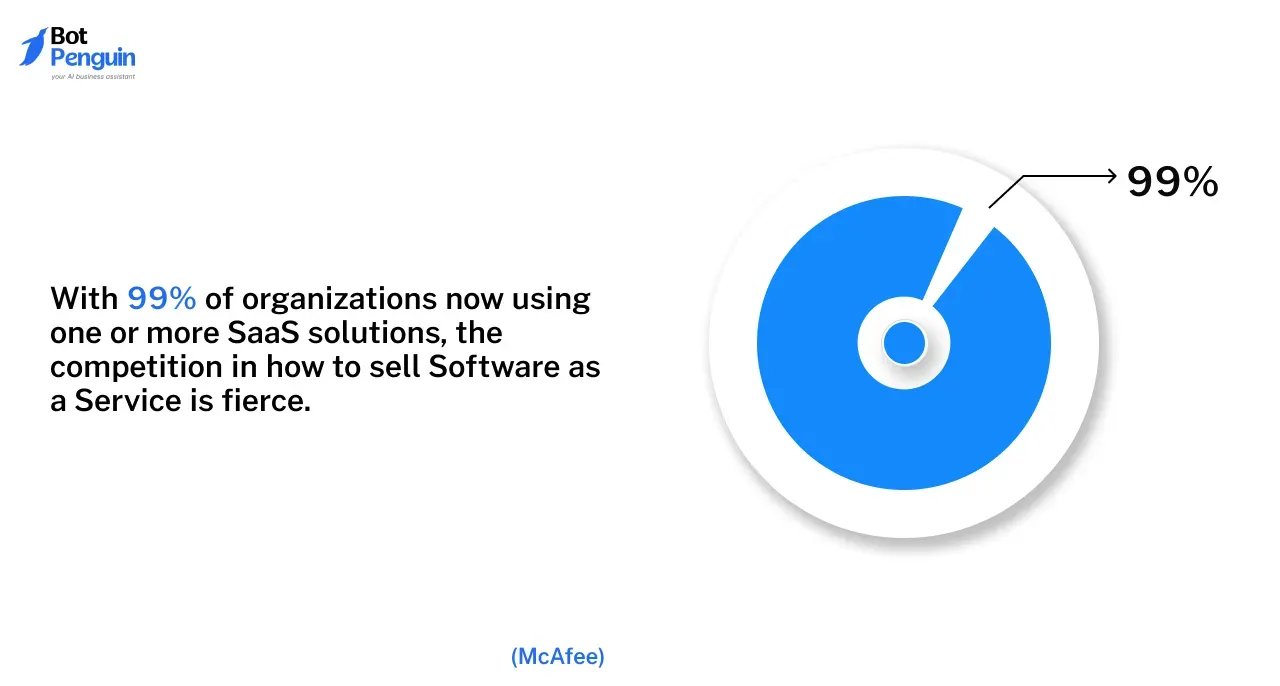
To understand how to sell software as a service, you need to be familiar with the key characteristics that define SaaS.
With 99% of organizations now using one or more SaaS solutions (McAfee), the competition in how to sell Software as a Service is fierce.
These features set it apart from traditional software and make it a preferred choice for many businesses.
- Subscription-Based: SaaS operates on a subscription model, offering users flexibility in payments, whether monthly or annually.
This recurring revenue stream is a massive draw for businesses, making it easier to predict income.
- Multi-Tenancy: SaaS platforms use a single instance of the software to serve multiple customers, which makes scaling efficient and cost-effective.
- Customization : While SaaS solutions are standardized, they often allow users to personalize their experience.
This feature enhances user satisfaction and can be a great selling point.
- Integration Capabilities: Most SaaS products easily integrate with other tools and services, allowing businesses to create a seamless workflow.
Highlighting this characteristic can attract SaaS partners and other companies looking for customizable solutions.
In summary, the key characteristics of SaaS—scalability, accessibility, and cost-effectiveness—make it a powerful model for businesses seeking agility and growth.
Offering free trials or freemium models can also be effective in how to sell software as a service, allowing potential customers to experience the product firsthand.
Building strategic partnerships and leveraging customer testimonials are additional tactics in how to sell software as a service.
With tools like BotPenguin, SaaS solutions become even more effective, delivering streamlined, user-friendly experiences that drive value and customer satisfaction.
Defining Your SaaS Product
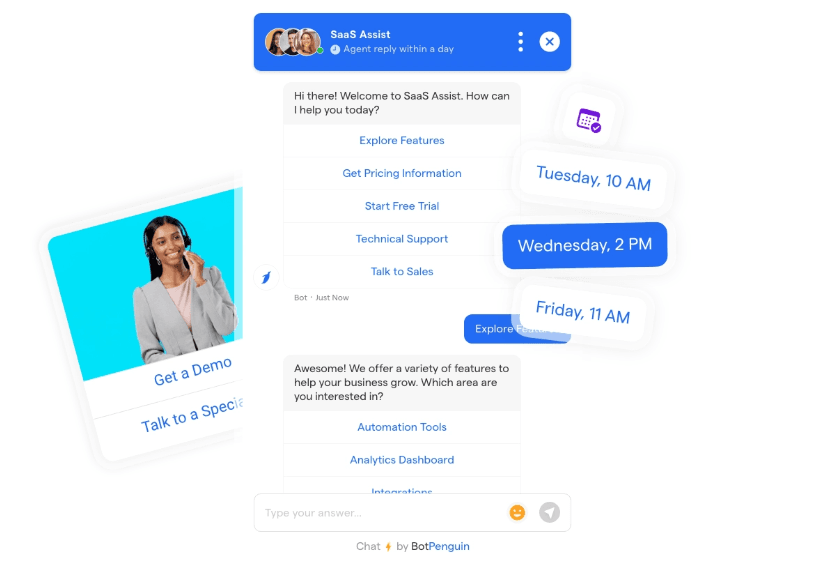
Before you learn how to sell software as a service, the first step is to clearly define your SaaS product.
BotPenguin’s SaaS product offers a comprehensive solution for businesses looking to sell software as a service. By partnering with SaaS partners and leveraging SaaS reseller opportunities, we simplify selling software as a service for any business.
It’s perfect for those looking to resell SaaS efficiently with maximum results.
Without understanding your target market, value proposition, and product roadmap, your efforts could be scattered, leading to missed opportunities.
Identify Your Target Market
To succeed in selling software as a service, identifying the right audience is crucial. Who are you creating this product for?
Defining your target market means understanding their pain points, preferences, and buying behavior. For instance, if your SaaS focuses on small businesses, you'll need to emphasize ease of use and affordability.
On the other hand, if you're targeting enterprises, security and scalability may be more important.
Knowing your market also helps you figure out how to make money with SaaS. Once you've identified the right audience, you can tailor your pricing model, marketing strategies, and even product features to better serve that market, increasing the chances of conversions and long-term customer retention.
Develop a Comprehensive Product Roadmap

Once you know your target market and UVP, the next step is to create a detailed product roadmap.
This plan should outline the core features, enhancements, and long-term goals for your SaaS product. Your roadmap keeps you focused on delivering what’s most important to your customers while allowing room for future improvements.
A well-thought-out roadmap will also help you explain how to make money with SaaS to investors or stakeholders.
By having a clear vision, you'll demonstrate how your SaaS will evolve and continuously deliver value to your customers, which is crucial for both growth and sustainability.
Effective SaaS Marketing Strategies
This section will cover essential SaaS marketing strategies to help you promote your product and increase sales.
Content Marketing for SaaS

Content marketing is a powerful tool for selling software as a service. By creating valuable and educational content, such as blog posts, case studies, or video tutorials, you can demonstrate your expertise and address your target audience’s pain points.
The goal is to provide useful information that not only engages readers but also builds trust over time. Content marketing is also essential for SEO, which brings us to the next strategy.
Search Engine Optimization (SEO)
SEO is key to ensuring your SaaS product is visible when potential customers search for solutions. By optimizing your website and content for relevant keywords, you increase your chances of appearing in search engine results.
Focus on targeting keywords that align with your audience’s search intent, like how to sell software as a service or how to make money with SaaS. SEO takes time, but the long-term benefits of organic traffic can significantly boost your SaaS sales.
Suggested Reading:
How Chatbots Can Drive Growth for Your SaaS Company
Social Media Marketing for SaaS
Social media marketing helps spread the word about your SaaS product and engage directly with potential customers.
Platforms like LinkedIn, Twitter, and Facebook allow you to showcase your product features, share customer success stories, and interact with your audience.
When used effectively, social media can help build your brand and attract potential SaaS partners who are interested in collaborating.
Email Marketing Campaigns
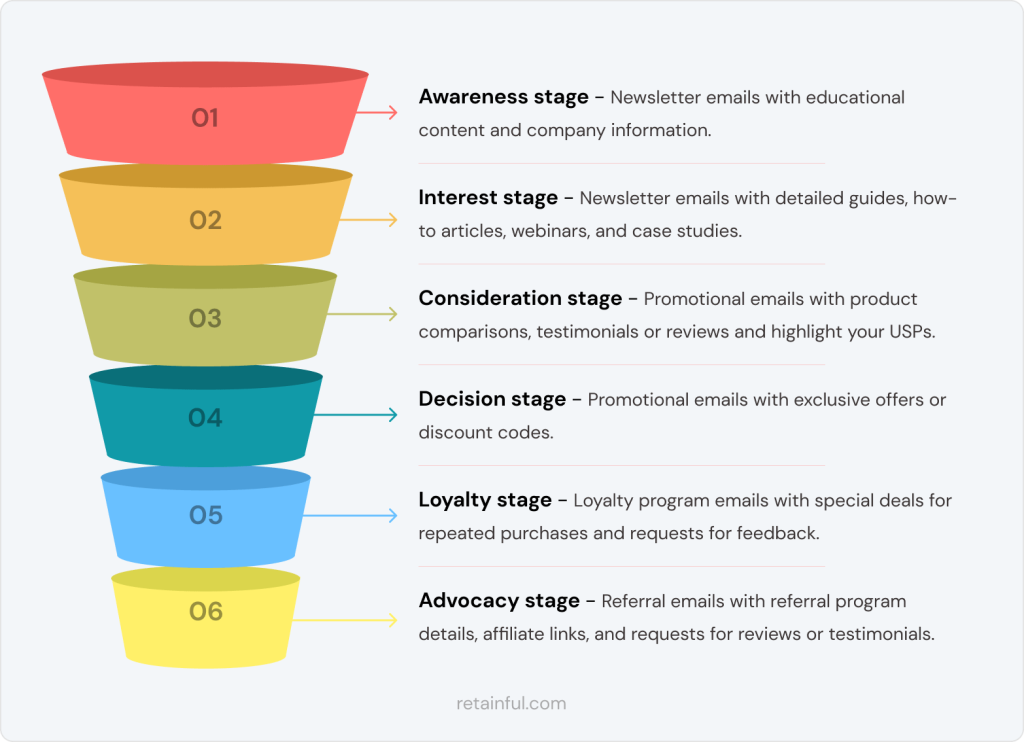
Email marketing remains one of the most effective ways to nurture leads. By sending targeted, personalized emails, you can keep potential customers engaged and guide them through the sales funnel.
Use email campaigns to showcase product updates, share valuable content, or offer exclusive promotions. A well-crafted email strategy can be a key driver in selling software as a service.
Pricing and Packaging Your SaaS Product

Once you've developed a strong marketing strategy, the next step is to set up pricing that attracts customers while delivering value.
Pricing and packaging can make or break your SaaS success, so it's crucial to get it right.
Determine Your Pricing Strategy
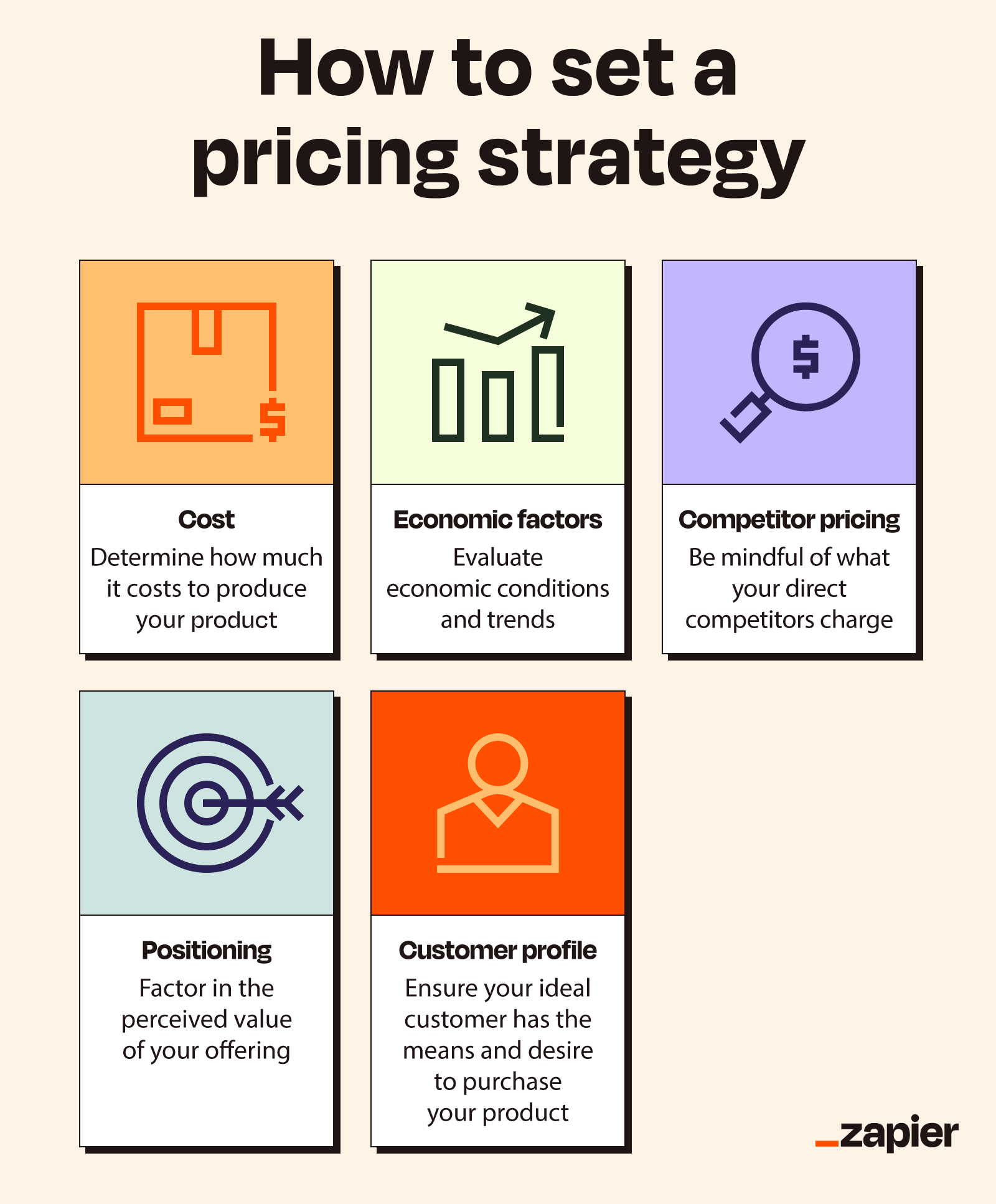
The pricing strategy you choose will depend on your target market, competitors, and value proposition.
Whether you opt for tiered pricing, pay-as-you-go, or flat-rate models, make sure your pricing aligns with what your audience is willing to pay.
Keep in mind that your pricing strategy should also reflect the scalability of your product, which will play a role in how to make money with SaaS.
Create Compelling Pricing Packages
Your pricing packages should offer clear value at every tier. For example, basic plans might offer essential features, while premium packages provide more advanced functionalities.
Creating clear, compelling pricing packages makes it easier for customers to choose the option that best fits their needs, helping you in selling software as a service more effectively.
Suggested Reading:
Converting Leads into Customers with a SaaS Chatbot
Offer Free Trials or Demos
Free trials or demos are a great way to let potential customers experience your product before committing to a subscription.
Offering a limited-time trial gives users a chance to see the value of your software firsthand, which can lead to higher conversion rates. A well-executed trial period can be the final push users need to become paying customers.
The Power of SaaS Partnerships
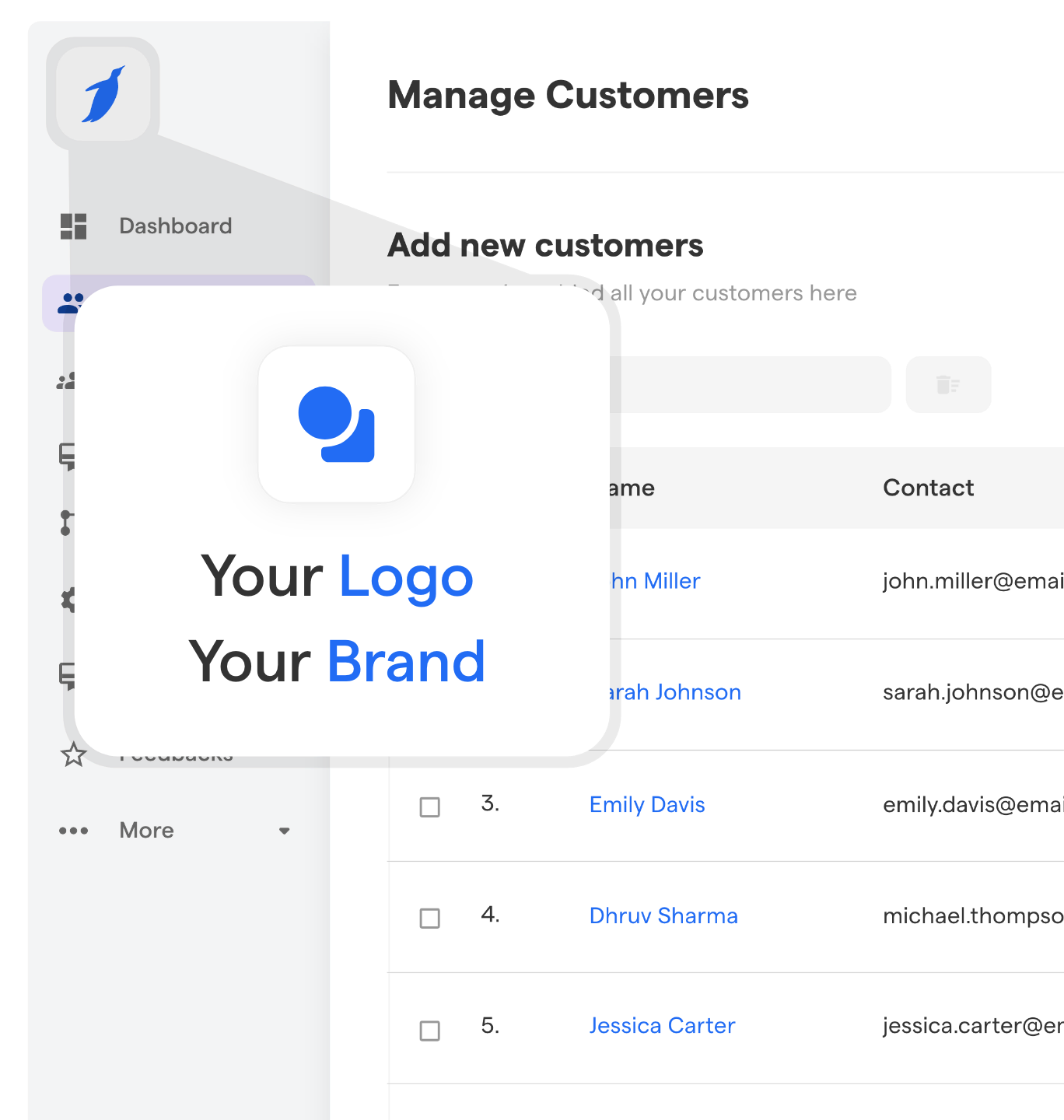
SaaS partners are very significant for growth and wider market expansion through software as a service.
Selling software as a service has gained a lot of prominence in recent times as many companies are looking at this trend to cater to the high demand for cloud solutions.
Business, by using a partnership with companies that have their expertise in SaaS, can expand its offerings by lifting the skills and the resources from them.
The practice of reselling SaaS is fast becoming a very popular business model in which any company packages up and offers a software solution to its clients.
As a reseller of SaaS, you can tap into an ever-expanding market, reap the benefits of recurring revenue streams, thereby diversifying your portfolio and making sure that your clients' tools are valuable aids in helping them with their work.
SaaS resellers can differentiate their services through excellent customer support and integration services, which are often critical in a SaaS environment.
Customer success can be a key for SaaS resellers to gain long-term partnership with customers and drive renewals. The partnership between SaaS providers and SaaS resellers creates a win-win situation for both parties.
Ultimately, it really amplifies the reach and effectiveness of SaaS solutions in today's digital marketplace for selling Software as a Service. Probably that embracing this SaaS reseller model would have created so many opportunities for growth for everybody involved.
Conclusion
In order to know how to sell software as a service effectively, businesses have to master many key strategies. When learning about how to sell software as a service, knowledge of one's target market is also essential.
BotPenguin, for example, focuses on certain industries with its chatbot solutions, so market focus requirements will apply to reselling SaaS.
Another important component of how to sell software as a service is creating a solid value proposition. To succeed at how to sell software as a service, you need to effectively communicate the benefits and return on investment with your product.
Implementing a proper marketing strategy is important while thinking of selling software as a service. For a robust marketing strategy, content marketing, SEO, and targeted advertising may be implied.
Ultimately, it will all boil down to continuous improvements and adaptations. Companies like BotPenguin will get the chance to customize their approach to how to sell software as a service in line with market trends and the needs of customers and hence will most likely achieve sustainable growth in such a very competitive industry.
Frequently Asked Questions (FAQs)
What is the best way to resell SaaS effectively?
Focus on solving customer problems, building trust through value-driven marketing, and offering a seamless user experience.
Tailor your approach to your target audience's needs while selling Software as a Service.
How do you price a SaaS product?
Consider tiered pricing based on features, usage, or customer size while selling Software as a Service.
Ensure selling Software as a Service reflects the value you provide and meets the expectations of your target market.
What marketing strategies work best for SaaS?
Content marketing, SEO, social media marketing, and email campaigns are effective strategies. These build trust, attract leads, and nurture them through the sales funnel.
How important is customer success in SaaS?
Customer success is critical for long-term retention. Satisfied customers mean lower churn rates, more referrals, and opportunities for upselling.
What KPIs should I track when I have to resell SaaS?
Track metrics like monthly recurring revenue (MRR), customer acquisition cost (CAC), churn rate, and customer lifetime value (CLTV) to evaluate your success in selling Software as a Service.



